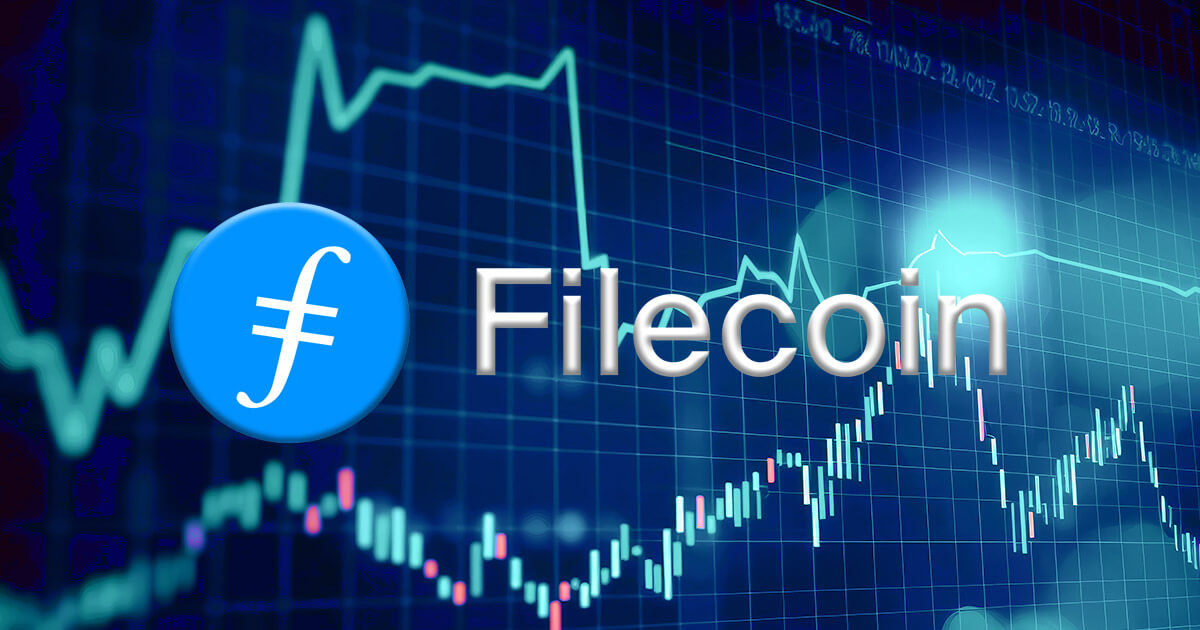
Filecoin has surged to a new yearly high amid significant development within its ecosystem.
The decentralized storage protocol’s FIL token price soared to a yearly peak of $8.43 but has slightly corrected to $7.92 as of press time, according to CryptoSlate data.
Notably, FIL is the only digital asset among the top 25 cryptocurrencies by market capitalization that saw a green candle in the last 24 hours, up more than 7% during the reporting period.
Over the past 30 days, FIL has grown by more than 63.61% and by 15% on the year-to-date metric. Despite this growth, Filecoin remains down about 96.54% from its all-time high of $236.965 in April 2021.
Why is Filecoin’s value rising?
FIL’s price performance can be attributed to several reasons, including recent developments within its ecosystem and the current artificial intelligence (AI) narrative pervading the broader market.
During the past week, Filecoin announced a significant partnership with the leading blockchain network, Solana.
According to the announcement, the collaboration would allow infrastructure providers, explorers, indexers, and anyone needing historical access to have seamless access to Solana’s block history.
“By leveraging Filecoin’s decentralized storage capabilities, Solana can achieve data redundancy, scalability, and enhanced security while staying true to its decentralized ethos,” it added.
Besides that, market observers have highlighted the current AI narrative as another reason for FIL’s bullish price performance.
Recent reports revealed that AI-linked tokens have rapidly gained after OpenAI announced its AI-powered video generation service, Sora. In addition, Nvidia’s recent earning report showed a massive demand for generative AI.
Considering this, Arthur Hayes, the co-founder of the BitMEX exchange, said, “All things AI-related [will] levitate.” According to him, this would push FIL’s price to $100.
Furthermore, a recent report from the protocol highlighted increased accessibility and demand for its products in the previous year. Notably, the protocol onboarded over 1,800 new large dataset clients and more than 180 clients to Singularity alone.
 Bitcoin
Bitcoin  Ethereum
Ethereum  Tether
Tether  XRP
XRP  USDC
USDC  TRON
TRON  Lido Staked Ether
Lido Staked Ether  Dogecoin
Dogecoin  Figure Heloc
Figure Heloc  Cardano
Cardano  WhiteBIT Coin
WhiteBIT Coin  Bitcoin Cash
Bitcoin Cash  Wrapped stETH
Wrapped stETH  Wrapped Bitcoin
Wrapped Bitcoin  USDS
USDS  Wrapped eETH
Wrapped eETH  Monero
Monero  Binance Bridged USDT (BNB Smart Chain)
Binance Bridged USDT (BNB Smart Chain)  Chainlink
Chainlink  LEO Token
LEO Token  WETH
WETH  Zcash
Zcash  Stellar
Stellar  Hyperliquid
Hyperliquid  Coinbase Wrapped BTC
Coinbase Wrapped BTC  Ethena USDe
Ethena USDe  Litecoin
Litecoin  Sui
Sui  Avalanche
Avalanche  Hedera
Hedera  sUSDS
sUSDS  Shiba Inu
Shiba Inu  USDT0
USDT0  Dai
Dai  Uniswap
Uniswap  PayPal USD
PayPal USD  Mantle
Mantle  Cronos
Cronos  Toncoin
Toncoin  Canton
Canton  World Liberty Financial
World Liberty Financial  Ethena Staked USDe
Ethena Staked USDe  Polkadot
Polkadot  USD1
USD1  Aave
Aave  Rain
Rain  Bitget Token
Bitget Token  MemeCore
MemeCore 


